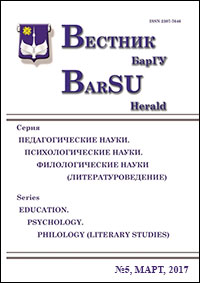THE ARTISTIC CRYPTOGRAPHY AS THE SET OF SIGNALSOF AESTHETIC INFORMATION IN PROSE OF 1920—1930S
Keywords:
meaning implication; literary techniques of the artistic cryptography; intuition; association; “privileged” fragments; “evidence-based” methodAbstract
The article examines the poetics of cryptography (or micropoetics) which was in demand during the period
when there was an increasing gap between the reality and official bureaucratic rhetoric (or the vulgarization of reality),
the intensification of censorship. The most effective and complicated techniques of meaning implication in prose of
the transitional epoch are analyzed on the basis of Z. Bedulya’s, M. Zaretsky’s, P. Golovach’s, S. Baranavyh’s,
M. Gorki’s works. The study shows that the most widely used literary devices are letter enciphering of ideas and the
technique of “disguise”. As well the influence of the Old and New Testament, reference to historical precedents on
writers’ ideas are described. The use of “evidence-based” method proves that the seemingly peripheral, secondary,
unessential images and characters turn out to be conceptually meaningful.
Ref.: 23 titles.
Downloads
Published
Issue
Section
License
Copyright (c) 2023 Вестник БарГУ Серия "Педагогические науки. Психологические науки. Филологические науки"
Это произведение доступно по лицензии Creative Commons «Attribution-NonCommercial» («Атрибуция — Некоммерческое использование») 4.0 Всемирная.
Авторы сохраняют за собой право заключать определенные договорные соглашения, касающиеся неисключительного распространения опубликованной версии работы (например, размещать ее в институциональном репозитории, публикация в книге) со ссылкой на ее первоначальную публикацию в этом журнале.





